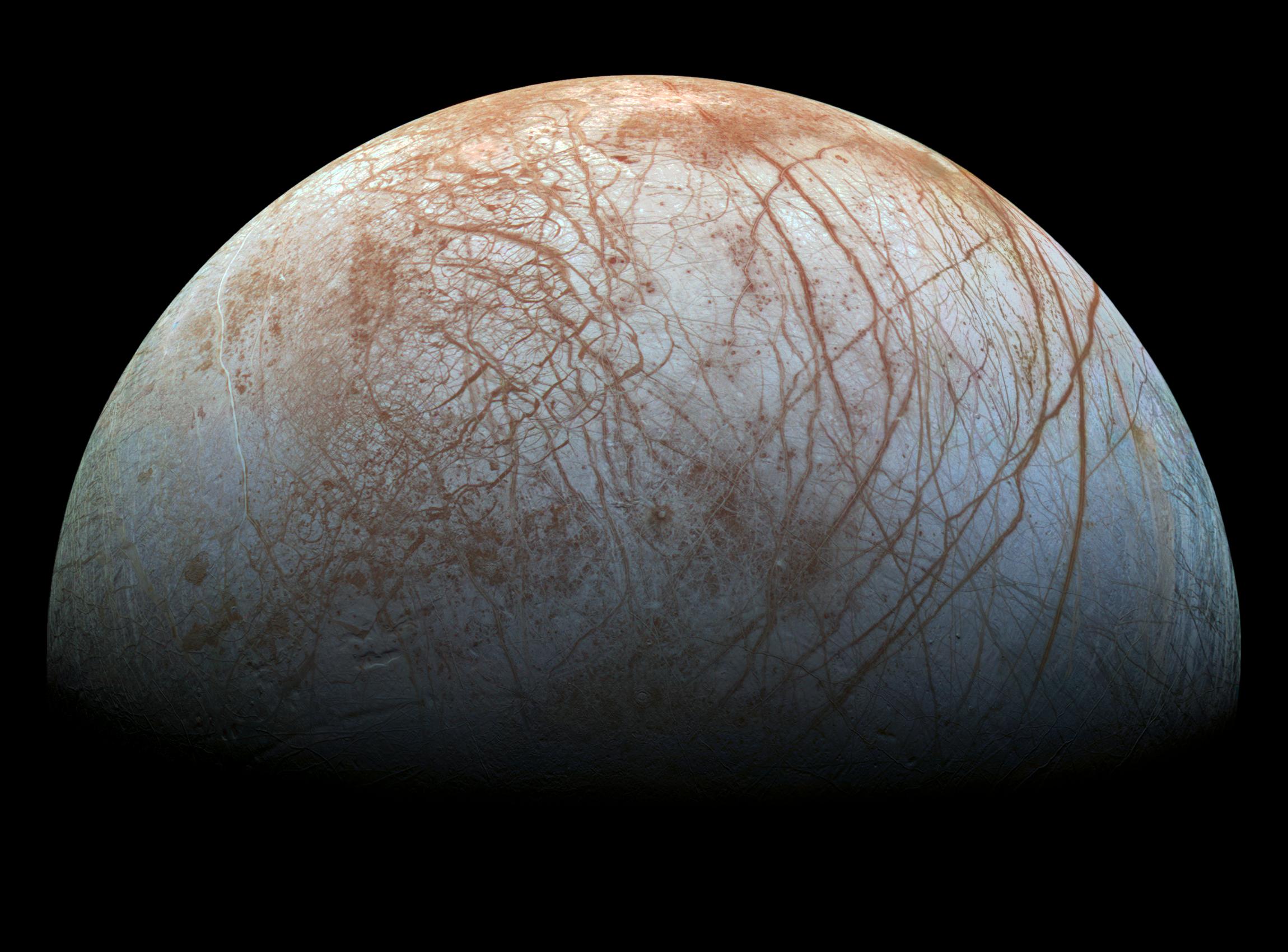NASA spacecraft set to make closest flyby of Jupiter’s ice-covered moon Europa

NASA's Juno spacecraft will be making the closest flyby of Europa, Jupiter's ice-covered moon, next week. During the close flyby, scheduled for Thursday, September 29, at 2:36 a.m. PDT (5:36 a.m. EDT), the spacecraft will come within 222 miles (358 kilometers) of the surface of the Jovian moon.
As the solar-powered spacecraft makes a close approach of the moon, it is expected to obtain some of the highest-resolution images ever taken of portions of Europa's surface. The mission will also collect valuable data on the moon's interior, surface composition, and ionosphere, along with its interaction with Jupiter's magnetosphere, according to NASA.
The September 29 encounter marks the second encounter with a Galilean moon during Juno's extended mission. Last year, the spacecraft sailed by Jupiter's giant moon Ganymede and now plans to make close approaches of Io in 2023 and 2024.
"Europa is such an intriguing Jovian moon, it is the focus of its own future NASA mission. We're happy to provide data that may help the Europa Clipper team with mission planning, as well as provide new scientific insights into this icy world," said Juno Principal Investigator Scott Bolton of the Southwest Research Institute in San Antonio.
Juno's upcoming flyby will put the spacecraft 222 miles above Europa's surface!The solar-powered spacecraft is expected to obtain some of the highest-resolution images ever taken of the icy moon's surface.Learn more HERE>> https://t.co/hUoxnvdMHB
— NASA Marshall (@NASA_Marshall) September 22, 2022
Europa, which is about 90% the size of Earth's Moon, is believed to hide a salty ocean below a miles-thick ice shell, sparking questions about potential conditions capable of supporting life underneath Europa's surface.
Launched on August 5, 2011, Juno is now in an extended mission phase, which tasks it with continuing its investigations through September 2025, including close passes of Jupiter's north polar cyclones, flybys of the Jovian moons Europa and Io, as well as the first exploration of the faint rings encircling the planet.










